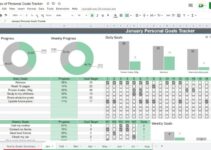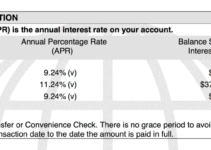Kiplingers Personal Finance 2024 sets the stage for this enthralling narrative, offering readers a glimpse into a story that is rich in detail and brimming with originality from the outset. This magazine serves as a beacon of financial wisdom, guiding individuals toward a secure and prosperous future.
As you delve into its pages, you will discover invaluable insights and strategies that will empower you to make informed decisions and navigate the ever-changing landscape of personal finance.
The content of the second paragraph that provides descriptive and clear information about the topic
Introduction
Kiplinger’s Personal Finance is a highly respected magazine in the financial industry. It has been providing financial advice and guidance to individuals for over 100 years.
The magazine was founded in 1920 by W.M. Kiplinger, a journalist who was passionate about helping people make informed financial decisions. Kiplinger’s Personal Finance is written in a clear and concise style, making it accessible to readers of all levels of financial literacy.
Target Audience
The magazine’s target audience is individuals who are interested in managing their finances wisely. This includes people who are just starting out in their careers, as well as those who are nearing retirement.
Relevance of the 2024 Edition
The 2024 edition of Kiplinger’s Personal Finance is particularly relevant in today’s economic climate. The magazine provides timely advice on how to save for retirement, invest for growth, and protect your assets.
Financial Planning
Financial planning is crucial for achieving your financial goals. It involves setting financial goals, creating a budget, managing debt, investing for the future, and planning for retirement.
Retirement Planning
Retirement planning is essential to ensure a comfortable retirement. Consider factors such as your desired retirement age, lifestyle, and income needs. Explore retirement accounts like 401(k)s and IRAs, and consider investments that align with your risk tolerance and time horizon.
Budgeting
Budgeting helps you track your income and expenses, and identify areas for saving and debt repayment. Create a budget that allocates funds to essential expenses, savings, and debt reduction. Regularly review and adjust your budget as needed.
Debt Management
Managing debt effectively can improve your financial health. Prioritize high-interest debts and consider debt consolidation or refinancing options to reduce interest payments. Create a debt repayment plan that fits your budget and work towards becoming debt-free.
Investment Options
Investing can help you grow your wealth over time. Consider different investment options based on your risk tolerance and investment goals. Diversify your portfolio across asset classes such as stocks, bonds, and real estate.
Risk Management Techniques
Managing risk is crucial in financial planning. Diversify your investments, maintain an emergency fund, and consider insurance products to protect against financial setbacks. Regularly review your risk tolerance and adjust your financial plan accordingly.
Investing
Kiplinger’s Personal Finance provides comprehensive insights into the latest investing trends and opportunities. The magazine emphasizes the importance of diversifying investments to mitigate risk and maximize returns.
Asset Classes
- Stocks:Represent ownership in companies and offer potential for growth and income through dividends.
- Bonds:Loans made to governments or corporations, providing fixed income payments over a specified period.
- Real Estate:Physical property, including land, buildings, and rental properties, offering potential for appreciation and rental income.
Diversification and Risk Management
Diversifying investments across different asset classes helps reduce overall risk. Kiplinger’s recommends allocating assets based on individual risk tolerance and financial goals. Risk management strategies include:
- Asset Allocation:Dividing investments among different asset classes based on risk and return objectives.
- Rebalancing:Periodically adjusting asset allocation to maintain desired risk and return levels.
- Dollar-Cost Averaging:Investing a fixed amount of money at regular intervals to reduce the impact of market fluctuations.
Personal Finance Management
Kiplinger’s Personal Finance emphasizes the significance of responsible personal finance management for financial well-being. It advises readers to create and stick to a budget, prioritize debt repayment, and plan taxes effectively.
Budgeting Techniques
The magazine highlights various budgeting methods, including the 50/30/20 rule, zero-based budgeting, and the envelope system. Each technique has its strengths and weaknesses, allowing readers to choose the one that best suits their needs and preferences.
Debt Repayment Strategies
Kiplinger’s offers guidance on different debt repayment strategies, such as the debt avalanche method and the debt snowball method. The debt avalanche method focuses on paying off high-interest debts first, while the debt snowball method prioritizes paying off smaller debts to gain momentum and motivation.
Tax Planning
The magazine emphasizes the importance of tax planning to minimize tax liability and maximize savings. It provides information on various tax deductions, credits, and retirement savings options, helping readers make informed decisions to reduce their tax burden.
Financial Literacy
Kiplinger’s stresses the importance of financial literacy for making informed financial decisions. It offers resources and guidance to help readers understand financial concepts, manage their finances effectively, and avoid common pitfalls.
Retirement Planning
Kiplinger’s Personal Finance 2024 emphasizes the crucial role of retirement planning for securing your financial well-being in your golden years. The magazine recommends starting early, saving diligently, and maximizing retirement contributions to ensure a comfortable retirement.
Retirement planning involves choosing the right retirement accounts, such as 401(k)s and IRAs, and understanding their tax advantages. 401(k)s, offered by many employers, allow you to contribute pre-tax dollars, reducing your current taxable income. IRAs, on the other hand, offer more investment options and flexibility, but contributions may not be tax-deductible.
Saving Early
Kiplinger’s stresses the importance of saving for retirement as early as possible. The power of compound interest can significantly grow your savings over time. Even small contributions made regularly can accumulate into a substantial nest egg by the time you retire.
Maximizing Contributions
To maximize retirement savings, Kiplinger recommends taking advantage of employer matching contributions in 401(k) plans. Many employers match a certain percentage of employee contributions, providing a valuable opportunity to increase your retirement savings at no additional cost to you.
Other Retirement Savings Options
In addition to 401(k)s and IRAs, Kiplinger’s discusses other retirement savings options, such as annuities and reverse mortgages. Annuities provide a guaranteed income stream in retirement, while reverse mortgages allow homeowners to tap into their home equity to supplement their retirement income.
Real Estate: Kiplingers Personal Finance 2024
Investing in real estate can be a lucrative way to build wealth and generate passive income. Kiplinger’s Personal Finance 2024 offers valuable insights into the world of real estate investing, guiding readers through the different types of investments, factors to consider, and strategies for success.
Real estate investments come in various forms, each with its own set of risks and rewards.
Types of Real Estate Investments
- Residential:Investing in single-family homes, apartments, or condos can provide rental income and potential appreciation.
- Commercial:Commercial properties, such as office buildings, retail spaces, and warehouses, offer long-term lease agreements and stable cash flow.
- Land:Investing in undeveloped land can be a speculative venture, but it can also yield significant returns if the land is developed or sold.
Factors to Consider
When evaluating a real estate investment, consider the following factors:
- Location:The location of the property can significantly impact its value and rental income potential.
- Property type:Different property types have different risks and returns. Consider your investment goals and risk tolerance.
- Condition:The condition of the property can affect its maintenance costs and overall value.
- Financing:Secure financing options before investing to avoid unexpected expenses or delays.
- Management:If you plan to rent out the property, consider the costs and responsibilities of property management.
Financial Products and Services
Financial products and services play a vital role in managing your personal finances. They provide protection, growth potential, and convenience.Different types of financial products and services are available to meet your specific needs. These include:
Insurance
Insurance is a financial product that protects you against financial losses due to unexpected events. There are different types of insurance, including:
- Life insurance:Provides financial support to your loved ones in case of your death.
- Health insurance:Covers medical expenses in case of illness or injury.
- Disability insurance:Replaces a portion of your income if you become disabled and unable to work.
Investment Accounts
Investment accounts allow you to grow your money over time. There are different types of investment accounts, each with its own benefits and drawbacks:
- Savings accounts:Offer low interest rates but provide easy access to your funds.
- Money market accounts:Offer slightly higher interest rates than savings accounts and provide limited access to your funds.
- Certificates of deposit (CDs):Offer higher interest rates than savings accounts but require you to keep your money in the account for a specific period.
- Stocks:Represent ownership in a company and have the potential for high returns but also come with higher risk.
- Bonds:Loans you make to a company or government, which pay you interest over time.
- Mutual funds:Pooled investments that offer diversification and professional management.
- Exchange-traded funds (ETFs):Similar to mutual funds, but traded on stock exchanges like stocks.
Economic Outlook
The global economy is expected to face challenges in 2024, with lingering effects from the pandemic, geopolitical tensions, and ongoing supply chain disruptions. However, there are also positive signs, such as strong consumer spending and business investment. Understanding the economic outlook can help you make informed financial decisions.
Factors influencing economic growth include consumer spending, business investment, government spending, and exports. Inflation, or the rate at which prices rise, is a major concern, as it can erode purchasing power and impact investment returns. Interest rates, set by central banks, affect borrowing and lending costs and can influence economic activity.
Inflation
Inflation has been a major concern in recent years, with rising prices for goods and services. Central banks have been raising interest rates to combat inflation, but this can slow economic growth. Inflation can impact personal finances by reducing the value of savings and increasing the cost of living.
Interest Rates
Interest rates are a key factor in personal finance. Higher interest rates can make it more expensive to borrow money, but they can also provide higher returns on savings. Interest rates are influenced by economic conditions, inflation, and central bank policies.
Understanding interest rate trends can help you make informed decisions about borrowing and saving.
Potential Impact on Personal Finances
Economic conditions can have a significant impact on personal finances. Economic growth can lead to job creation and wage increases, while economic downturns can result in job losses and reduced income. Inflation can erode the value of savings and increase the cost of living.
Interest rates can affect borrowing and saving costs. By understanding the economic outlook, you can make informed financial decisions and prepare for potential challenges.
Personal Finance Trends
The world of personal finance is constantly evolving, and the next few years are likely to bring even more significant changes. Here are some of the emerging trends that are expected to shape the future of personal finance:
Technology is continuing to play a major role in the way people manage their finances. Online banking, mobile apps, and other digital tools are making it easier than ever to track spending, save money, and invest for the future.
Globalization
Globalization is also having a major impact on personal finance. As the world becomes increasingly interconnected, people are more likely to work, live, and invest in different countries. This can create new challenges and opportunities for managing finances.
Changing Demographics, Kiplingers Personal Finance 2024
The changing demographics of the population are also having a significant impact on personal finance. The aging population is leading to an increased demand for retirement planning and long-term care services. The rise of millennials and Generation Z is also changing the way people think about money and investing.
The future of personal finance is bright. There are many challenges ahead, but there are also many opportunities. By staying informed about the latest trends, people can make informed decisions about their finances and plan for a secure future.
Conclusion

In conclusion, Kiplingers Personal Finance 2024 is an indispensable resource for anyone seeking to take control of their financial destiny. Its comprehensive coverage, expert advice, and actionable insights will equip you with the knowledge and confidence to achieve your financial goals.
Embrace the wisdom within these pages and embark on a journey toward financial freedom and prosperity.
Questions Often Asked
What is the target audience for Kiplingers Personal Finance?
Kiplingers Personal Finance is intended for individuals seeking guidance and insights on personal finance, including investors, retirees, and those looking to improve their financial well-being.
How often is Kiplingers Personal Finance published?
Kiplingers Personal Finance is published monthly, providing readers with up-to-date information and analysis on the latest financial trends and developments.
What are some of the key topics covered in Kiplingers Personal Finance?
Kiplingers Personal Finance covers a wide range of topics, including financial planning, investing, retirement planning, personal finance management, real estate, financial products and services, economic outlook, and personal finance trends.








